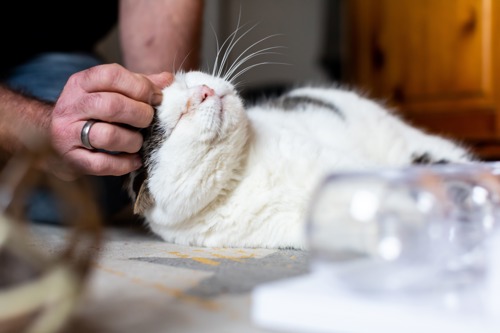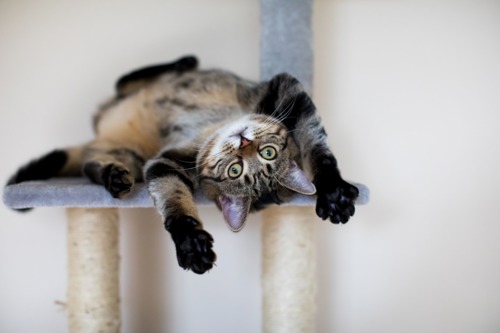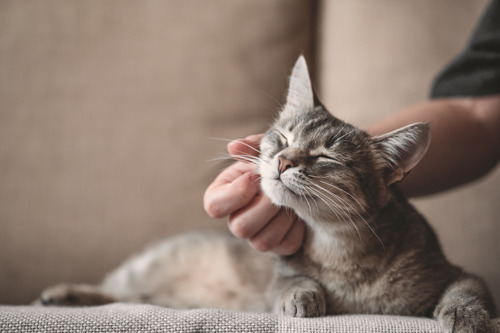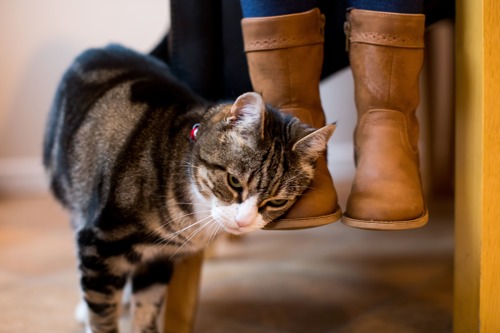Discover how to tell if a cat likes you and how to make them your new best friend
Cats can make wonderful, loveable companions. But some can take a bit of time to form a bond with you.
Much like us, cats can be extroverts and introverts. Some lap up the attention and are quick to trot over for a fuss. Others will take their time to warm to you, especially if they are anxious, nervous or shy.
Whether they’re your own cat at home, a cat you’re visiting at a friend’s house, or a stray cat on the street, there are a few simple tricks you can use to build up their trust in you.
With a bit of patience and our top tips, they’ll hopefully soon be winding around your legs, headbutting your hand and maybe even jumping on your lap for a cuddle!
How long does it take for a cat to like you?
There is no definitive answer to this question as it will be different for each cat. Some particularly confident cats will become your best friend in a matter of minutes. Others who are more nervous may take several weeks or months to form a bond with you. Some cats may never feel comfortable around you, but don’t take this personally! If they had little or no contact with humans when they were a kitten, then they’ll forever be fearful of people. Find out more about feral cats.
How do you know if a cat likes you?
Cats can be a bit of enigma so it can be difficult to know how they feel about you. Here are a few signs that show a cat likes you.
- They approach you with their tail pointing up. This is a friendly cat greeting
- They rub against you or headbutt you. This means they’re transferring their own scent onto you to mark you as safe
- They slow blink at you. This means they’re comfortable enough to take their eyes off you, just for a moment
- They show you their tummy. This is the ultimate sign of trust! But giving them a belly rub is the ultimate betrayal
- They sit on your lap. This means they’ve officially claimed you as their own. Don’t you dare get up and make them move!
Why doesn’t my cat like me?
If you don’t see any of the signs that your cat likes you, don’t worry. It doesn’t necessarily mean that they don’t like you! Some cats are just more aloof and independent, preferring to keep to themselves while you still tend to their every need. If your cat hides from you or is aggressive towards you, then this also doesn’t necessarily mean they don't like you. There could be other reasons for this behaviour. Speak to your vet to see if there could be any underlying issues you’re not aware of. As long as you give your cat space and keep any interactions on their own terms as much as possible, you're more likely to develop a close bond.
How to build trust with a cat
1. Back off
Your first temptation when you see those big, adorable eyes might be to run over and say hello. But this could startle your new friend. If they run away, just leave them be. Cats need time to get accustomed to your scent, sound and presence before they realise you’re not a threat. When they’ve decided you can be trusted, curiosity should take over. Then you’ll hopefully hear the pitter-patter of paws coming over to you.
2. Don’t lean over them
Great! The curious kitty is getting closer to being your forever friend. Now it’s time to get down to their level. Or, if you can’t do that, simply avoid leaning over them. Allow them to make the first move which will normally happen through a gentle rub against you. Cats rely heavily on scent, so this is the perfect way for them to get to know you.
3. Keep calm
If you talk in a soft, slow tone, cats are much more likely to warm to you with ease. Keep a calm demeanour by avoiding loud noises and sudden bursts of movement. Make sure you announce yourself before walking into a room. Unexpectedly disturbing their cat nap could frighten them and set you back when building a friendship.

4. Slow blinking
As primates, we prefer to look at other living beings in the eye. Unfortunately, this can cause cats to feel uncomfortable. If a cat catches your eye, try half-closing your eyes and blinking slowly, then peacefully turning away.
5. Be their new playmate
A great way to bond is playtime. You’re unlikely to meet a cat that doesn’t enjoy chasing something, whether it’s a homemade toy or pet shop fishing rod. This activity also helps build their physical and mental health. Find out how to play with your cat.
6. Avoid that fluffy tummy
Don’t assume a cat is asking for a tummy tickle when they lie on their back. Exposing their belly and neck makes them vulnerable and is essentially a sign of trust. Most cats do not appreciate tummy tickles from people they are unfamiliar with. In fact, this affectionate act is likely to be met with aggression.

7. Keep calm and quiet
Whether they’re clawing your carpet or pouncing on your toes, never raise your voice to a cat. Shouting will not teach them positive behaviour. You’ll simply scare them and lose any trust you’ve built. Instead, give them an alternative outlet for their scratching and hunting behaviour with a scratching post and cat toys. Find out why cats scratch.
8. Keep your hands to yourself
As natural hunters, cats can easily confuse your hands for prey to paw, claw and play with. To avoid injury and make sure your cat does not see you as a toy to attack, never use your bare hands to play.
9. Save them a space
Cats love to elegantly walk around and mind their own business. Feel free to admire their beauty from a distance, but do not follow them. This can make them feel threatened, especially if you end up accidentally cornering them. Of course, you’re only looking for a cuddle, but a cat’s affection cannot be rushed.
10. No one likes a tease
Tricking or teasing a cat with toys like lasers may cause a cute reaction. But it can lead to a lack of trust and build behavioural issues. Receiving an unexpected fright could even result in an injury, which is no way to make friends with any kind of animal.





